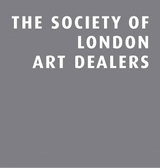Fernand Léger (1881 - 1955)
- AVAILABLE ARTWORKS FOR SALE
For more available works please contact us on stern@pissarro.com or +44 (0)20 7629 6662.
Fernand Léger was a French painter, sculptor and filmmaker. He was born in Argentan, Normandy, 1881, the son of a cattle farmer. Legér moved to Paris in 1900, where he attended the Académie Julian. At the same time, he studied at the École des Beaux-Arts as a non-enrolled student under the supervision of Gerôme and other celebrated artists. Legér was twenty-five before he began to work seriously as a professional painter.
Between 1909 and 1914, Léger moved in the avant-garde circles of his new neighbourhood of Montparnasse. Here, he became acquainted with artists such as the sculptor Jacques Lipchitz and the painter Robert Delaunay. At this time, his paintings become populated with tubular and geometric shapes composed in black, white and the primary colours, representing his own personal engagement with Cubism. Indeed, when he exhibited at the Salon d'Automne in 1910, and later in the Salon des Indépendants in 1911, his work was placed together with those by painters who would be later recognised as 'Cubists'.
Léger's experience of the First World War, however, had a significant impact on his work. He spent two years at the front at Argonne, where he sketched airplanes and his fellow soldiers in the trenches, until he was almost killed in a German gas attack at Verdun in September 1916. The period of convalescence following this incident marked a new phase in the artist's painting, where his tubular forms became incorporated into machine-like images. This ‘mechanical’ style continued to characterise the artist's oeuvre throughout the 1920s and onwards, and it can certainly be interpreted as Léger's reaction to the conflict.
Léger was a great enthusiast of the cinema, as an artistic expression of the modern; indeed, for a long time he considered renouncing painting for filmmaking. In 1923, he designed the set for the laboratory scene of Marcel L'Herbier's film, L'Inhumaine, and in 1924 he produced and directed the Futurism-inspired film, Ballet Méchanique, in collaboration with Dudley Murphy, George Antheil and Man Ray.
Léger made his first trip to the United States in 1931, and within four years of this initial visit, the Museum of Metropolitan Art in New York City showcased the artist in an exhibition of his work. At the outbreak of the Second World War, Leger decided to return to the United States to live. During this period he taught at Yale University, before returning to France in 1945.
In the twilight of his life, Léger lectured at Bern and designed mosaics and stained-glass windows for the Central University of Venezuela in Caracas. He died at his home in 1955.
Read more
Between 1909 and 1914, Léger moved in the avant-garde circles of his new neighbourhood of Montparnasse. Here, he became acquainted with artists such as the sculptor Jacques Lipchitz and the painter Robert Delaunay. At this time, his paintings become populated with tubular and geometric shapes composed in black, white and the primary colours, representing his own personal engagement with Cubism. Indeed, when he exhibited at the Salon d'Automne in 1910, and later in the Salon des Indépendants in 1911, his work was placed together with those by painters who would be later recognised as 'Cubists'.
Léger's experience of the First World War, however, had a significant impact on his work. He spent two years at the front at Argonne, where he sketched airplanes and his fellow soldiers in the trenches, until he was almost killed in a German gas attack at Verdun in September 1916. The period of convalescence following this incident marked a new phase in the artist's painting, where his tubular forms became incorporated into machine-like images. This ‘mechanical’ style continued to characterise the artist's oeuvre throughout the 1920s and onwards, and it can certainly be interpreted as Léger's reaction to the conflict.
Léger was a great enthusiast of the cinema, as an artistic expression of the modern; indeed, for a long time he considered renouncing painting for filmmaking. In 1923, he designed the set for the laboratory scene of Marcel L'Herbier's film, L'Inhumaine, and in 1924 he produced and directed the Futurism-inspired film, Ballet Méchanique, in collaboration with Dudley Murphy, George Antheil and Man Ray.
Léger made his first trip to the United States in 1931, and within four years of this initial visit, the Museum of Metropolitan Art in New York City showcased the artist in an exhibition of his work. At the outbreak of the Second World War, Leger decided to return to the United States to live. During this period he taught at Yale University, before returning to France in 1945.
In the twilight of his life, Léger lectured at Bern and designed mosaics and stained-glass windows for the Central University of Venezuela in Caracas. He died at his home in 1955.

